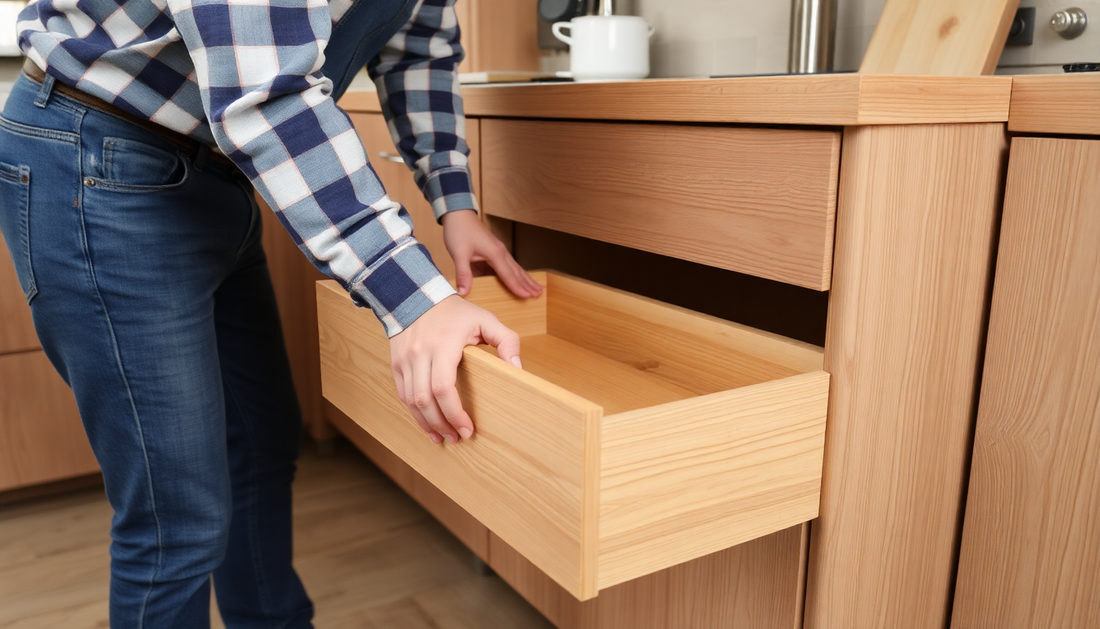
How to Install Kitchen Drawer Cabinets: Complete Guide for Your Home
How to Choose the Right Cabinet for Your Home
Choosing the right cabinet can change the way your home looks and functions. Cabinets are not just storage spaces. They add to your home's style and charm. Kitchen drawer cabinets, in particular, offer great storage and easy access, making them a popular choice.
Understanding the basics about cabinets can help you make a good decision. From styles to materials and how to install them, knowing these details ensures you get the best for your space. This guide covers everything from how to install kitchen drawer cabinets to maintaining them after installation.
Understanding Different Types of Kitchen Drawer Cabinets
Kitchen drawer cabinets come in various styles and materials. Some common types include plywood cabinets, solid wood cabinets, MDF cabinets, and metal cabinets. Each type has its own benefits.
Plywood cabinets are strong and survive moisture well. Solid wood cabinets look classic and add warmth to your kitchen. MDF cabinets are budget-friendly and smooth, which makes painting easy. Metal cabinets, though less common, are durable and modern in design.
Styles can range from traditional, shaker, rustic, to modern frameless designs. Choosing the right type depends on your kitchen’s look and how much use the cabinets will get.
Measuring Kitchen Cabinets Properly
Measuring kitchen cabinets properly is key to a smooth installation. Start by measuring the width, height, and depth of the available space. Use a steel tape measure for accuracy.
Check the walls and floor for level and straightness because uneven surfaces can affect cabinet alignment. Write down all measurements clearly.
Avoid common mistakes like relying on old measurements, not measuring twice, or ignoring wall obstructions. Measure openings at multiple heights to confirm consistency.
Tools Needed for Cabinet Installation
Having the right tools makes installation easier. Essential tools include a drill, screwdriver set, level, tape measure, stud finder, hammer, and clamps. These tools help you secure cabinets firmly and align them perfectly.
Optional tools like a power sander, nail gun, and jigsaw can speed up the process and improve results, especially if you need to make adjustments or custom cuts.
How to Install Kitchen Drawer Cabinets Step-by-Step
Preparation is the first step. Clear out the kitchen space and remove old cabinets if replacing. Make sure walls and floors are clean and level.
Start by locating wall studs using a stud finder. Attach the cabinet frames directly to studs to ensure security. Use a level to check alignment before securing each cabinet with screws.
Once frames are installed, move to installing the drawers. Slide them into place, making sure they glide smoothly and align correctly. Adjust any drawer tracks if needed.
Kitchen Cabinet Installation Tips for a Smooth Process
Safety comes first. Always wear safety glasses and gloves during installation. Protect your knees with pads when working low.
Some areas near corners or plumbing can be tricky. Take your time to measure and cut precisely. Shims may help level cabinets on uneven floors.
If the job feels too big or complex, it’s wise to call a professional. They have experience and can avoid costly mistakes.
Maintaining Your Cabinets Post-Installation
After installing your kitchen drawer cabinets, caring for them preserves their look and function. Clean cabinets regularly with a mild detergent and soft cloth. Avoid harsh chemicals that can damage finishes.
If drawers stick or don't close properly, check the tracks for dirt or damage. Lubricate metal parts and tighten screws as needed. Small fixes keep your cabinets working well for years.
Conclusion
Choosing and installing the right cabinets affects your home’s style and usability. Understanding the types of kitchen drawer cabinets, measuring kitchen cabinets properly, and knowing which tools are needed for cabinet installation are crucial steps.
Following clear kitchen cabinet installation tips helps prevent problems and ensures a smooth process. After installation, regular maintenance keeps cabinets looking and working great.
Planning carefully and taking your time with each step allows you to enjoy your new cabinets for a long time. Whether you do it yourself or hire a pro, these tips will guide you toward a successful kitchen upgrade.
